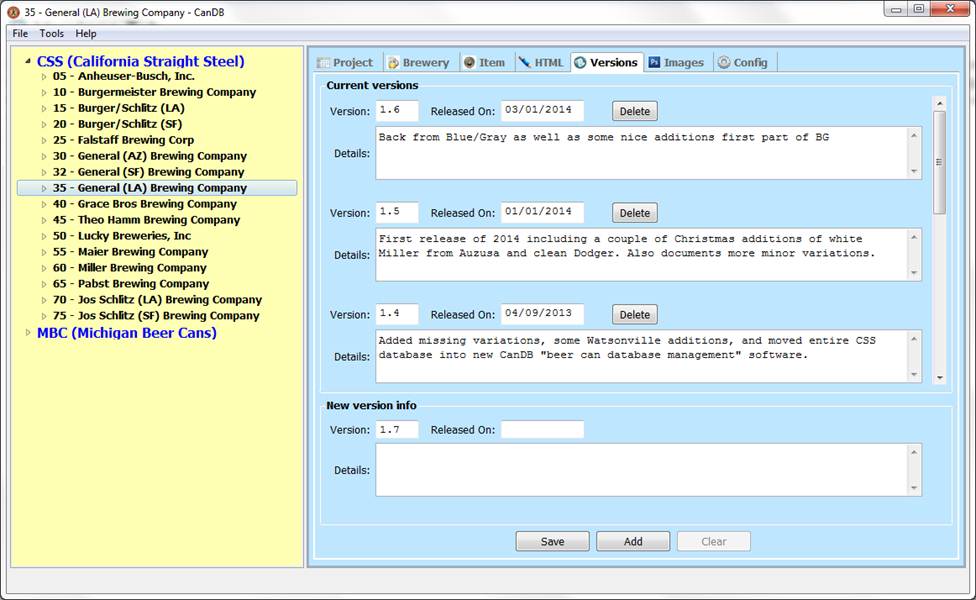![]() Versions Tab
Versions Tab
Unless you are working on a very specific project with a very well defined, fully known set of items, it is likely you will add new entries (or at least new variations) or make corrections to some of the existing data over time. Instead of waiting for years to be "done", recommendation is to make progress in "steps" or "versions", releasing composite content at certain intervals over time, and let the project grow over time. As such, the "Versions" tab allows you to provide some notes about content in a given version, and tag beer cans with the given version number from a combo box selection in the "Item" tab.

All items/variations will be assigned a version number in which the data was added to the project. From this, HTML generation will create a Versions HTML page, listing each version, and more importantly a composite and pictorial of all items that were added/changed within that version. With this feature, when a new version of the project is released, users of the data may simply look at the latest version composite/pictorial to see "what is new" instead of needing to view all previous data.
When defining a version, there are just three properties collected per a given version:
|
Property |
Description |
|
Version |
A unique version number, typically in the form of "M.N", starting with version 1.0 and moving forward. For example, the above figure shows version 1.0, 1.1, and placeholder to add version 1.2 details to the CSS project. |
|
Released On |
Month/day/year in which the specific version was "released". For the MBC and CSS projects, this is the date on which the given version was first uploaded to website. With CanDB, recommendation for a release is to update the data on the Versions tab, generate all HTML files for the entire project, and then copy the results to website or other media. |
|
Details |
Text description or summary of why the given version was released. This can be anything from a simple sentence to many lines of information. However, since CanDB will look at the version numbers stamped on each beer can data and will automatically build a composite listing with the can name, brewery, reference info, can company/code as well as a pictorial with hypertext links of what was added in the version, for MBC and CSS projects typically just a few sentences are used. |